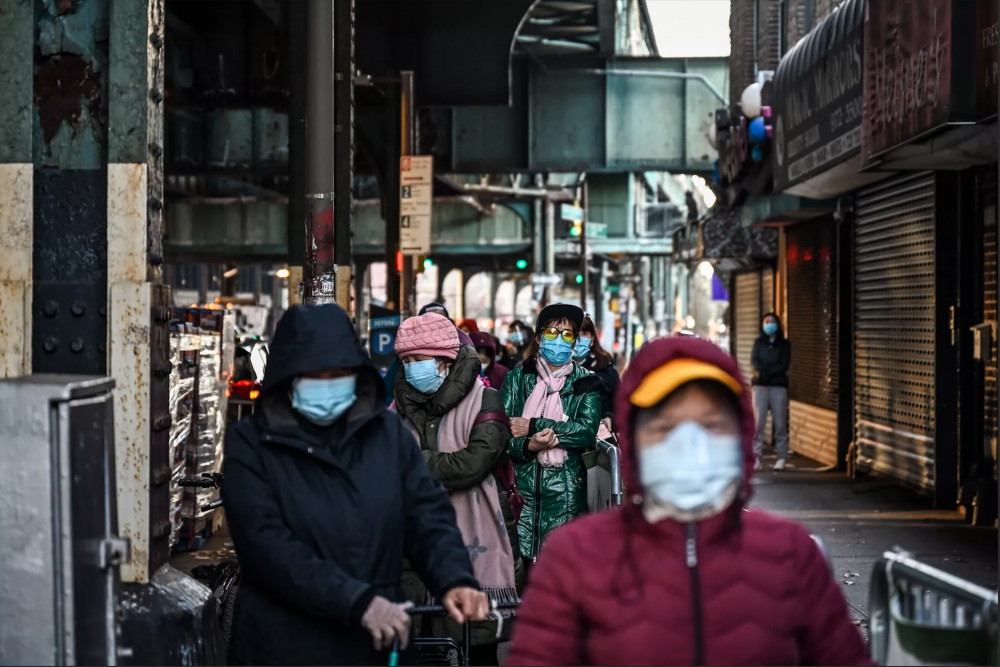
JAIDE LIN – MARCH 15TH, 2021
EDITOR: AMANDA ZHANG
Introduction
When the $2.2 trillion coronavirus stimulus package was greenlit through bipartisan compromise in late March, the $260 billion in emergency unemployment insurance promised some reprieve to workers adversely impacted by the COVID-19 lockdown. The aid influx emerged in a time when unemployment had skyrocketed from 3.6 to 4.5 percent, the largest over-the-month increase since 1975. A weekly benefit increase of $600 for four months would prove vital for individuals who found themselves out of a job during the pandemic.
Under the CARES Act, over $600 billion flooded state workforce agencies through a new initiative known as the Pandemic Unemployment Assistance program, leaving state programs hurrying to release funds into the workforce. The speedy, rushed dispersion of aid offered a golden opportunity to scammers, con artists and criminal groups.
“Water is going to find the leak. The criminals are going to find the weakest link,” the U.S. Digital Response’s unemployment team lead, Alyssa Levitz, had warned during proposals of emergency aid and relief. And now, workforce agencies, small businesses, and workers who have lost their jobs to the pandemic are paying the price for this oversight.
Uncovering the Leak
In December of 2020, Orange County prosecutors uncovered an unemployment fraud scheme where suspects formed a falsified aid agency, Nguyen Social Services, to file over 1,000 invalid unemployment claims through California’s Employment Development Department (EDD). However, criminal activity extended far beyond this one scheme in particular. In total, Labor Secretary Julie Su estimates that California has paid out $11 billion in fake jobless claims, with billions of dollars undergoing investigation for potential fraud.
However, the issue extends far beyond Orange County and California’s statewide aid dispersion strategy. “This isn’t just an Orange County problem. It isn’t just a California problem. This is a breakdown of catastrophic proportions that has failed the American taxpayer,” says Orange County District Attorney Tom Spitzer.
States including Arizona, Maryland, Ohio, Washington, Colorado, and New York have collectively reported a loss of billions of dollars to criminal activity in COVID relief aid distribution. This enticing opportunity for criminal syndicates not only means that less money will be available to unemployed individuals impacted by the pandemic, but also that rising employer taxes could put states and governments in a heavier budget deficit. Even while officials work to review and collect a full account of the fraudulent activity diverting billions of U.S. taxpayer dollars, the majority of America’s 50 statewide agencies have reported they have yet to assess the full extent of loss.
To make matters worse, the “cyber pandemic” is far from over as additional organized crime rings and opportunists enter the cash grab for federal dollars. Individual fraudulent claims slipping through the cracks in government pandemic aid provisions has quickly evolved to become a much more formidable foe.
Identity Theft, Poultry Farms, and the “Scattered Canary”
Catalyzed by the veritable flood of legitimized claims entering federal aid agencies and state programs, fraudulent activity skyrocketed as state governments were pressured to disperse aid as quickly as possible. Ranging from identity theft to impersonating deceased individuals to explosive usage of the “dark web” for accruing personal information, various channels of criminal activity have experienced a resurgence, continuing practically unchecked until Congress required the verification of claimant identities in December of 2020. In fact, hundreds of residential areas are recorded by the Small Business Administration to be “ commercial hubs” of fabricated small businesses.
South Hermitage Avenue, a suburban residential street occupying Chicago’s South Side, emerged on SBA records as a bustling center of 18 businesses each containing at least 10 workers. According to Chicago Business, all 18 were promptly approved for $10,000 pandemic relief grants in the summer of 2020. Under the $214 billion Economic Injury Disaster Loan program intended to prop up small businesses across the country, officials have reported aid disbursements to “statistically impossible numbers” of claimants. In the Chicago area itself, over 81,000 grants were approved even when there were only 19,000 verified small businesses, a total of $600 million in funds being diverted to phantom companies.
Criminals have even taken advantage of specific industries that were provided a fast-tracked government aid application process, most noticeably for agricultural producers. Investigations of applicants in May and early June uncovered thousands of unconfirmed farms in heavily urbanized areas such as San Francisco and Brooklyn. One Chicago resident even reported having his identity stolen under the guise of owning two poultry farms in Greenwich Village and was later informed of the subsequent loan approvals.
“Would it be too much to ask for the government to figure out it shouldn’t be making loans to poultry farmers in New York City?” the Chicago resident had remarked during an interview with Bloomberg News. “How hard is that to screen?”
Outside more typical criminal activities such as ineligible claimants filing for unemployment benefits and small business grants, more organized crime groups have also gained further traction in the form of fabricated businesses, account takeovers and SSN-selling dark web sites. One cybersecurity company, Agari, has been collaborating with federal security groups in the tracking of an active Nigerian cybercrime ring known as the “Scattered Canary.” The group, along with other similar criminal networks, has already been linked to the diversion of hundreds of millions of dollars in unemployment benefits from 11 U.S. States including California, Massachusetts, and Hawaii.
The group’s process is systematic, with dozens of employees disseminating feelers into statewide networks, testing for various weak links while procuring falsified identities or otherwise collecting personal information from the dark web. According to Agari’s cybersecurity reports, the criminal organization frequently utilizes Gmail’s free account service to mass-email applications to state aid websites and CARES Act providers. Using personal information likely purchased from the dark web, members are also able to direct mail-in funds to properties where the original owners have long since moved out, or even “hired” fabricated “employees” using these identities to apply for benefits under their name as part of a fake small business.
Large-scale, organized criminal activity in the vein of government aid and pandemic relief presents several threatening implications for government agencies, businesses, and taxpayers alike. Quantifying the extent of losses is difficult, but investigators within Pondera Solutions Inc., a defrauding firm, have uncovered cases of groups such as the Scattered Canary using shared bank accounts involving “hundreds or thousands of claimants, as well as shared phone numbers and addresses.”
Right now, investigators and cybersecurity organizations are attempting to stem the flow of misused government aid packages while also working to answer another pressing question: how much of the federal aid was lost to fraud, and what does this mean for future business and economic activity?
Calculating the Costs
According to the Federal Trade Commission, in the summer of 2020, American taxpayers had lost more than $77 million to fraud related to COVID pandemic aid. However, investigators at the National Consumers League, a consumer advocacy group, claim that the number is a gross underestimate that only accounts for “the tip of the iceberg” as additional scams and criminal activity continue to surface.
Now, an NBC article published in February puts the calculated loss at somewhere around $100 billion due to the COVID-relief program, critiquing “weak internal controls” and lack of regulation during the “high-risk” aid dispersion program as a staggering amount of taxpayer funds were misspent by government and state agencies.
While the data and evidence points accusingly at opportunists, scammers, and criminal syndicates for exacerbating the deficit of funds available to small businesses and workers out of a job due to the pandemic, others argue that this fraudulent activity is a mere symptom of the ongoing desperation fueled by pandemic-related anxiety, lack of public confidence in government response, and overall limited opportunities for welfare and benefits provision.
The Small Business Association (SBA), while referring suspicious loans for criminal investigation, has reported that many of the places that were hotspots for fraudulent unemployment claimings were, in fact, in low-income neighborhoods that were disproportionately impacted by the COVID pandemic. Even while federal investigators attempt to tally the losses for legitimate businesses and unemployed individuals, evidence also suggests that the blame for such explosive criminal activity rests with the government.
From this perspective, the issue of fraudulent behavior during the disbursement of government aid appears not as a one-time spike in criminal activity given the volatility of federal relief provisions, but as a result of various factors: a lack of understanding concerning aid applications from would-be recipients, limited alternatives to accrue workplace benefits and loans, and ongoing pandemic-related fears fueling public anxiety and erratic consumer behaviors.
“Water is going to find the leak,” Levitz had said. But it remains to be seen how the government plans to patch the weakest link.
Featured Image Source: THE CITY
Disclaimer: The views published in this journal are those of the individual authors or speakers and do not necessarily reflect the position or policy of Berkeley Economic Review staff, the Undergraduate Economics Association, the UC Berkeley Economics Department and faculty, or the University of California, Berkeley in general.



